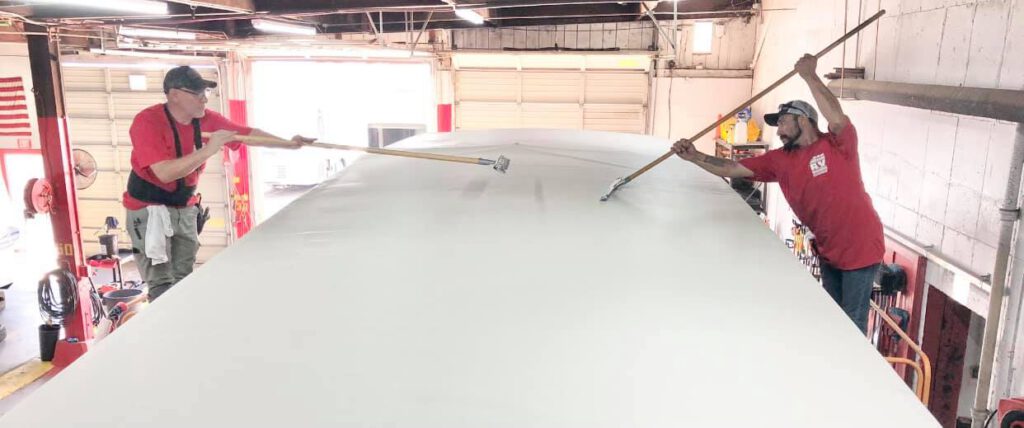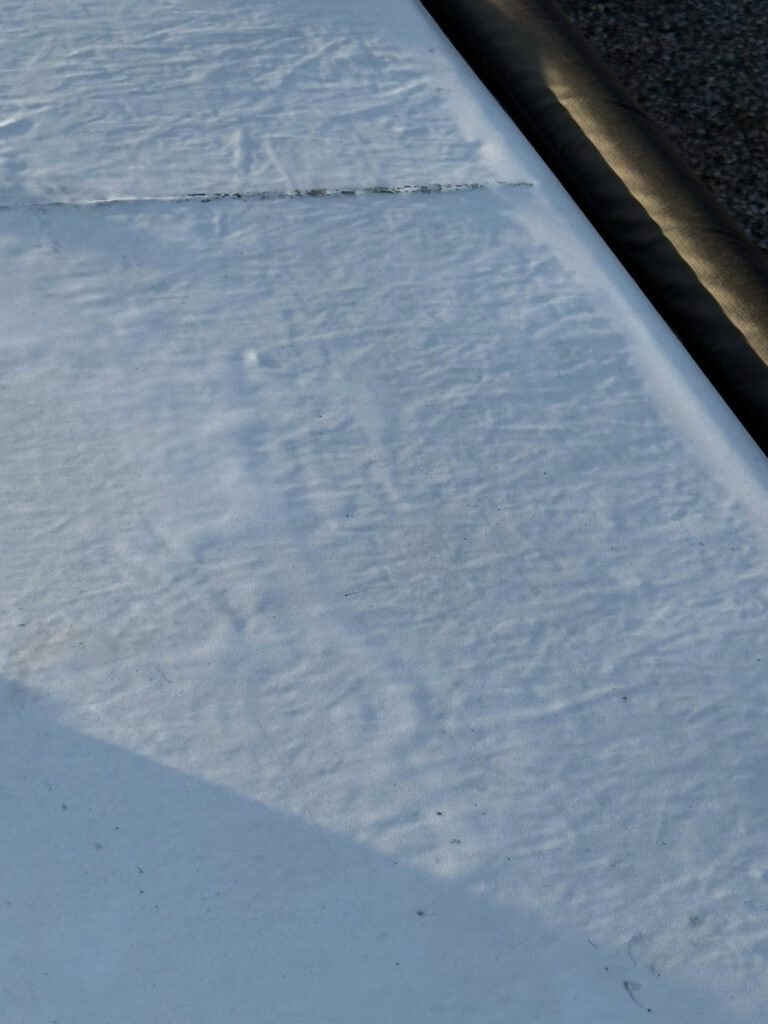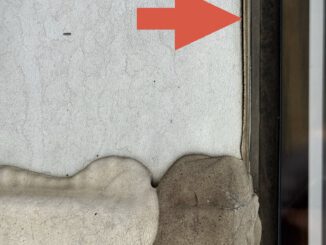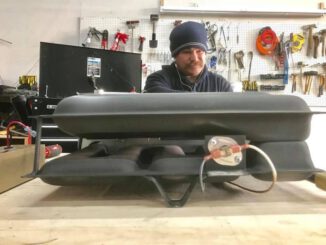
By Dustin Simpson – Owner, California RV Specialists & Contributing Author, RVTravel.com
I recently received a message from an RV owner in one of our Facebook groups who was concerned about their towable’s roof. They had noticed ripples, bubbles, and uneven spots under the membrane — and were worried it meant a serious failure. Their question was a good one, and it’s something I’ve seen quite a few times in the shop over the years.
In this case, the issue turned out to be something we call an “over-glued roof.” It’s a problem that starts at the factory or during a roof replacement when too much adhesive is used under the membrane — typically Alpha Systems or Dicor roof glue.
The Purpose of the Adhesive
When properly applied, roof adhesive allows the membrane (EPDM, TPO, or PVC) to expand and contract naturally as the RV moves or as temperatures change. It’s supposed to bond, but not restrict.
When the installer uses too much, it has the opposite effect — locking the membrane rigidly to the OSB or plywood decking beneath. That’s when trouble begins.

What Happens When It’s Over-Glued
Here’s what I’ve found during inspections and repairs:
1. Loss of Flexibility
The roof can no longer move freely. As the RV body flexes down the highway, a roof that’s “cemented” in place begins to show wrinkles, bubbles, or even small tears at seams.
2. Trapped Solvents and Uneven Curing
Adhesives contain solvents that must “flash off” before the roof is laid down. When the layer is too thick, those solvents get trapped — leading to blistering, soft spots, and staining under the surface. Over time, that chemical entrapment can degrade the bottom of the membrane itself.
3. Damage to the Roof Deck (OSB or Plywood)
This is where long-term damage really happens. Most towables use OSB for roof sheathing. When adhesive is applied too heavily, the solvents and moisture stay trapped against the wood, causing it to swell, warp, and delaminate. The result is a wavy, uneven roof — not because the membrane failed, but because the decking underneath was damaged.
4. Cosmetic Distortion
A roof that’s over-glued often looks terrible in sunlight. You may see ripples, soft spots, or shiny patches that seem to change shape depending on temperature. It’s not always a sign of imminent failure, but it’s definitely a symptom of poor installation or trapped moisture below the surface.

Should RV Owners Be Concerned?
In most cases, the problem is more cosmetic than structural — but it should still be evaluated. Over time, OSB that’s warped or swollen can cause roof sealants to separate prematurely, leading to leaks. It also makes future roof replacement much harder, since removing an over-glued membrane can pull up chunks of wood and drive up labor costs.
If you notice your roof membrane looks “tight like a drum,” feels spongy, or shows ripples that change with temperature, it’s worth getting it inspected by a qualified RV repair facility. The earlier it’s documented, the easier it is to address before the decking deteriorates further.
Final Thoughts
At California RV Specialists, we see these issues regularly during roof inspections and replacements. The key takeaway is that proper adhesive application is just as important as the membrane material itself. Too much of a good thing can cause real trouble over time.
If you have roof concerns or suspect yours might have been over-glued, get a professional inspection before problems worsen. Catching it early can save you thousands later — and keep your roof performing the way it should.
Contact us to schedule a appointment today!
- Office Phone: 209-263-7040
- Hours of operation:
- 8 am to 4 pm Monday-Friday; Closed Saturday & Sunday
- Closed for lunch 12 pm – 1 pm
- Address: 200 S. Cherokee Lane, Lodi, CA 95240
- www.calrvspecialists.com
Make sure you check out our YouTube channel for more helpful information, and other social media pages.



